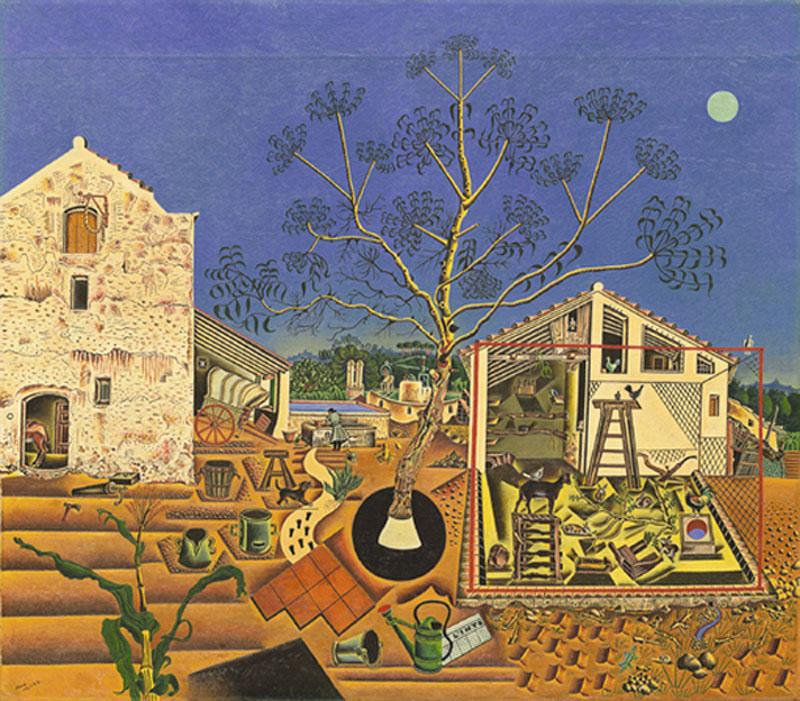The other day, a friend remarked to me that in these lean economic times, we will see important works of art and literature being produced. In other words, artists, almost in spite of themselves, will be working away, and the challenges they face will be a stimulus to go further, do things differently and make progress.
This dedication to art-making was, for instance, an early characteristic of Joan Miro . As early in his career as 1915, he quoted Goethe's statement that, "He who always looks ahead may sometimes falter, but he then returns with new strength to his task". At that time, Miro was principally dedicated to landscape painting, and was soon to produce some of his early masterpieces about life at Mont-roig, his family home in the Tarragona countryside, near Barcelona.
House with Palm Tree, 1918, Joan Miró. (image courtesy of the Reina Sofia Museum, Madrid)
L’ornière, The Rut, 1918, Joan Miró, Private Collection
Vegetable Garden and Donkey, 1918, Joan Miró, (Image courtesy of Moderna Museet, Stockholm, Sweden
The Farm, oil on canvas, 1921, Joan Miró (image courtesy of the National Gallery of Art, Washington, DC),
These four paintings are all results of what Miró regarded as trial and error work. He admitted to stumbling as he tried to deal with his depiction of the countryside, but he always got "to his feet again". This determination to "return with new strength to his task" remained with him during his long and artistically very inventive life, despite the difficulties he experienced personally or because of his opposition to Franco and his regime in Spain. (A marvellous celebration of Miró's dedication to art, "The Ladder of Escape", can be seen in Barcelona at the Fundacio Joan Miro from 13th October, 2011 to 25th March next year. It has just closed at the Tate Modern, London.)
Every single artist hesitates, stumbles, doubts and abandons one path for another. Only those who have enough inner fortitude, a strong enough conviction that they must continue with their endeavours, are people whose creativity leaves a mark in our world. When there are really difficult times, economically, politically or personally, it becomes a real test of an artist's dedication that he or she continues to work and produce. We are living in such times. It will be interesting to see - in a few years' time - whether my friend's prediction about stellar work being produced in today's world is accurate.




